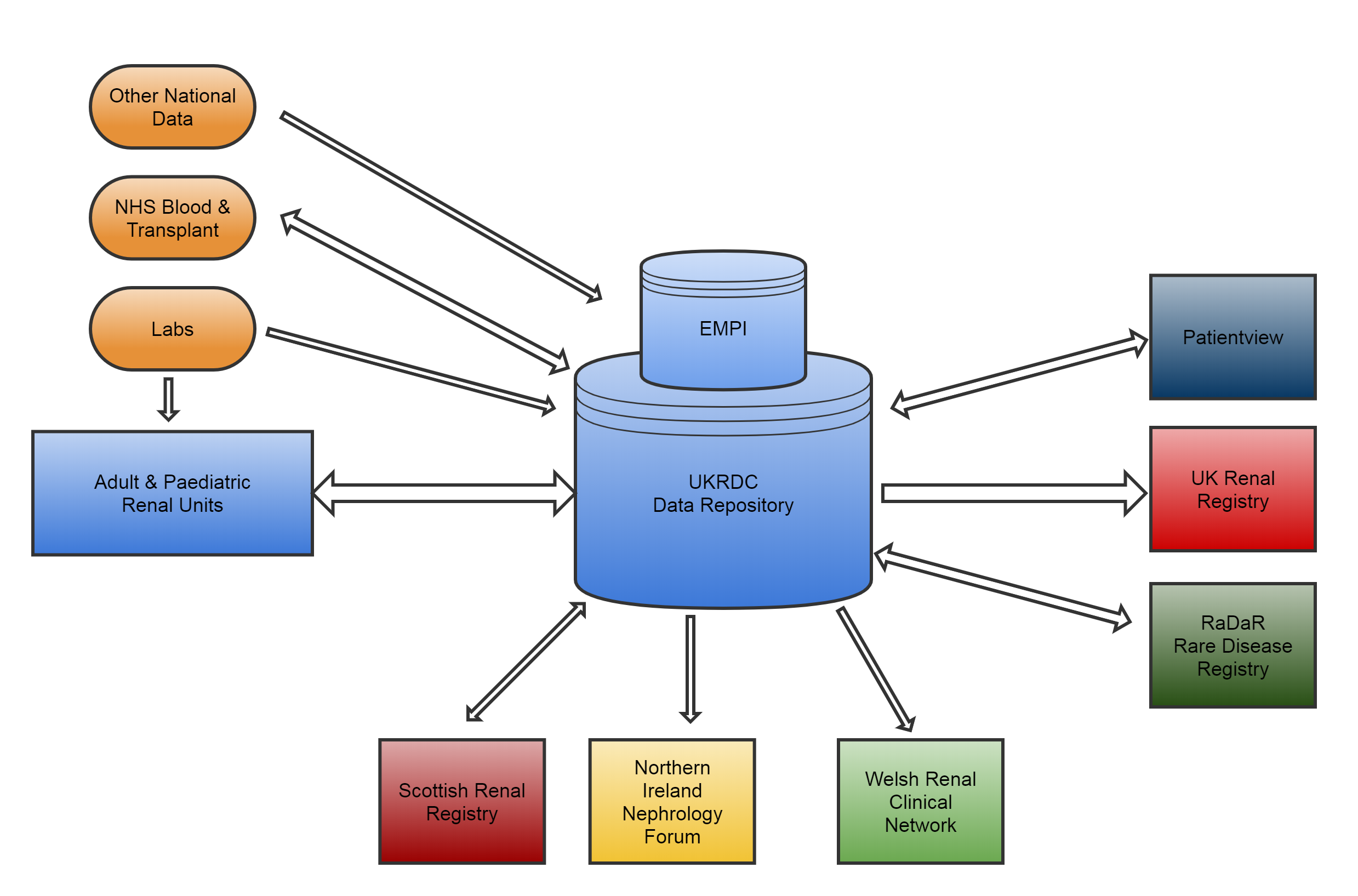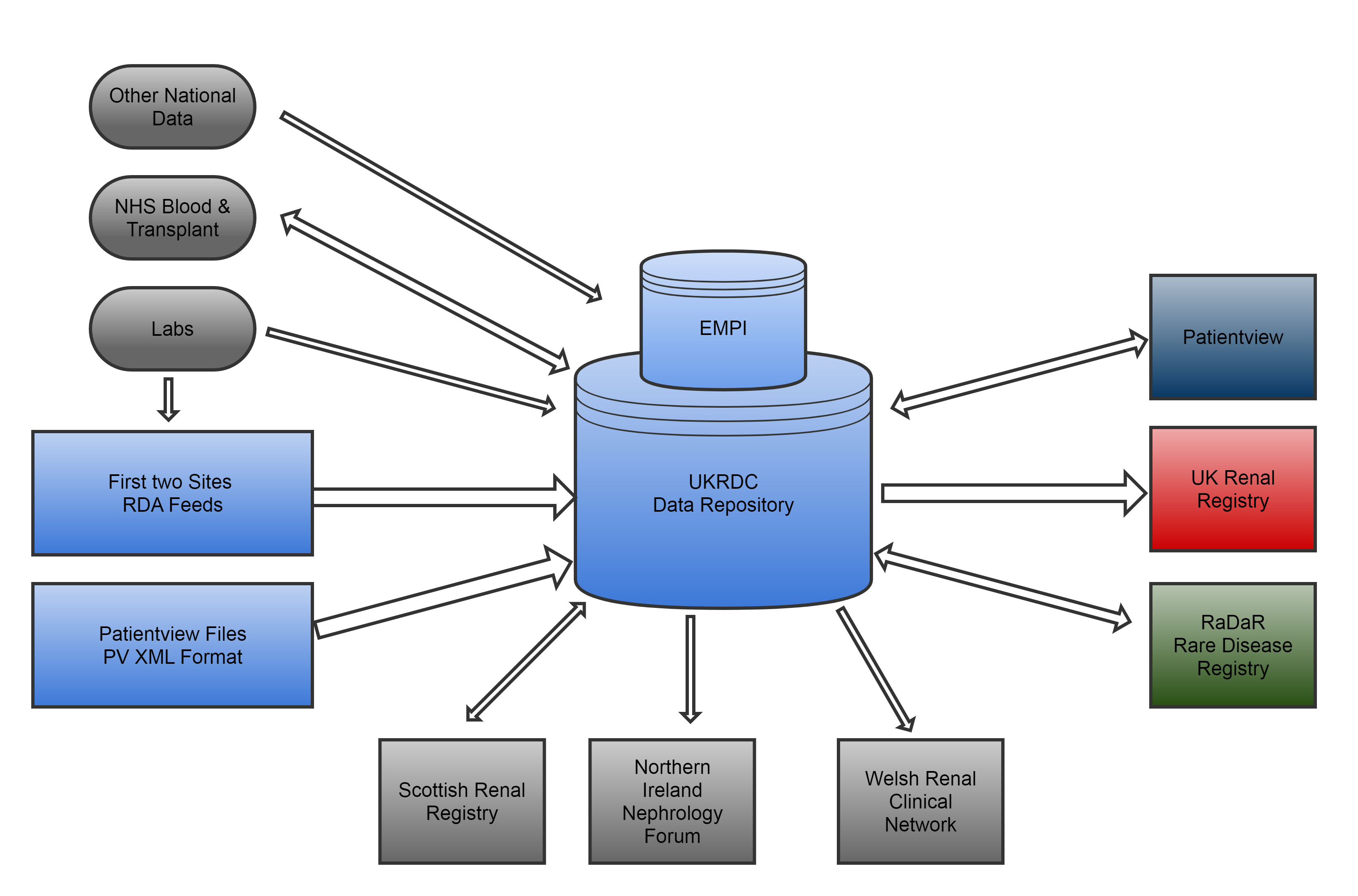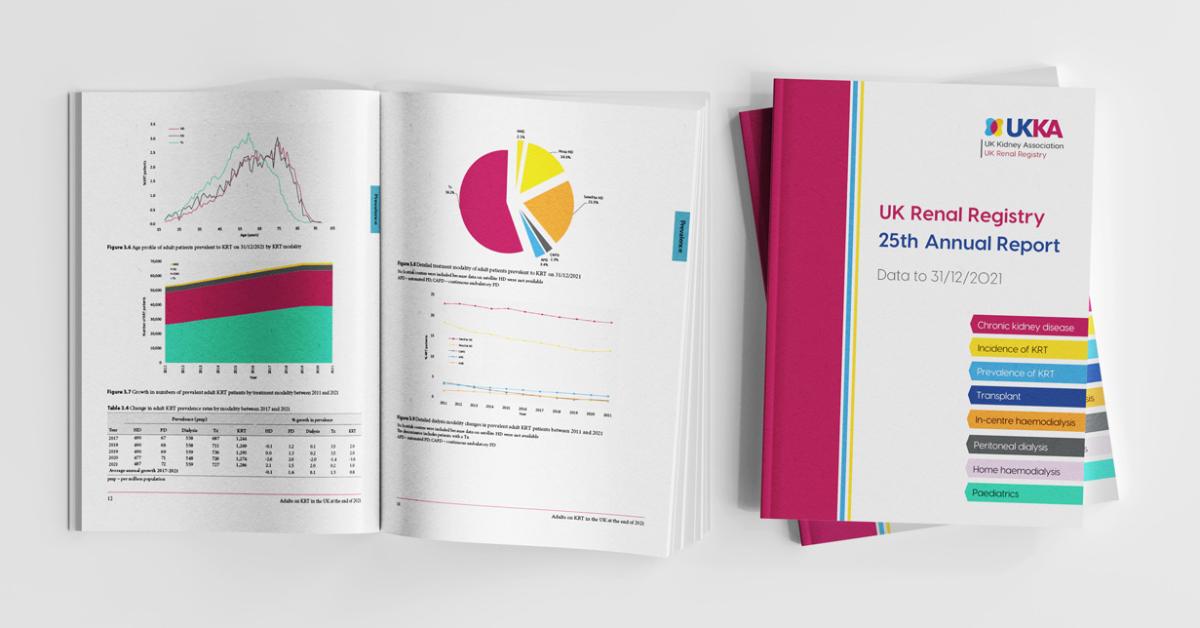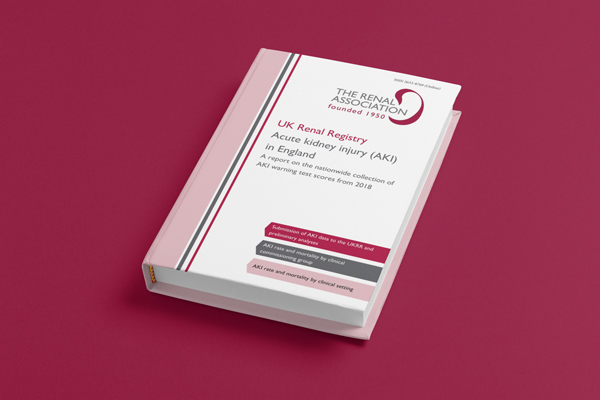Background
UK renal centres started using computerised electronic patient records (EPRs) in the 1960s. Every adult renal centre in the UK now has a well-developed EPR system provided by a variety of third party software suppliers.
These EPRs were deployed before standards had been developed. Many of these systems were built with individual schemes for coding, communication, naming conventions, definitions, error trapping and validation. As a result, some cannot support modern and now often mandatory processes for security, patient identification, clinical coding (diagnoses and procedures) or the use of granular hierarchical schemes that allow data to be grouped automatically.
Few current systems can store the metadata that are required to interpret data correctly (e.g. assay method and reference range). It is also impossible to transfer records electronically between renal centres or other specialities when a patient changes address or status. In some cases, word of mouth and local knowledge are required to interpret the data and operate the systems.
In recognition that better use could be made of existing knowledge, collaborations, patient involvement and new information technologies, the UK Renal Data Collaboration (UKRDC) was formed at a meeting at The Royal Infirmary Edinburgh on 29 Nov 2012.
Our members
The UKRDC comprises the following organisations:
- UK Renal Registry (UKRR), the Renal Association
- Scottish Renal Registry (SRR)
- Patient View (PV)
- UK Registry for Rare Kidney Diseases (RaDaR) – NHS-linked access only
- British Association for Paediatric Nephrology (BAPN)
- Northern Ireland Nephrology Forum
- Welsh Renal Clinical Network
Aims
- Improve and standardise the scope and detail of renal centre data
- Move to paperless EPRs
- Improve and standardise data communications between UKRDC member organisations and between renal centres, allowing for the rapid transfer of a full patient record and full access to their data by patients
- Improve the use made of available data and thereby improve efficiency.
Proposals
To achieve these aims the UKRDC has submitted several proposals for IT developments in the renal community in the UK.
- Adopt standard terms using SNOMED CT and LOINC
- Adopt standard methods for labelling and formatting data via the creation of a data model and standard messaging systems.
- Develop two way communications between all participants, including patients via Patient View (PV)
- Build and maintain a data repository with a suitable operating system, security, communication network and database. This will act as the communications hub for the organisations in the UKRDC.
Benefits to centres
- Single feed to support RaDaR, PV and audit returns less overhead
- Once configured should provide all data with no need to change as audit requirements change
- Audit data available in a more timely fashion
- Summary data available online with more frequent updates
- More real time data visualisations.
Data repository
The data repository aims to:
- Provide secure, fast and high capacity data storage, with validation and version control
- Support a query language with output to other renal systems and external analysis software
- Adhere to relevant principles specified in The Renal Information Exchange Group (RIXG) renal database requirements
- Manage data with sufficient granularity and associated metadata to support the needs of all UKRDC member organisations
- Identify data records with a unique ID e.g. using a Global Unique Identifier (GUID)
- Collaborate closely with the UK renal IT/EPR suppliers
- Improve renal unit clinical and data governance and the acceptance of standardisation of clinical terminology and message structure
- Adopt fully electronic records that can support the highest standards of care, decision support, embedded prompts, error and pattern detection. It also aims to provide full access for patients and reuse of data for secondary purposes including quality improvement, service development, clinical and epidemiology research and teaching.
Design
The current design is based around a mirth engine which handles all messages in and out of the UKRDC. This is supported by python services and some java modules.

The plan is to develop a simple user interface that can provide feedback to units on errors and data received. We anticipate more ‘real-time’ audit visualisations.
Current status
Currently the primary inputs are the PV feeds which are fed onto PV and, if the patient is on RaDaR, to their record on RaDaR as well.

There is also some support for patient entered data on PV which is sent back to the UKRDC and stored against the patients record.
Currently two centres are sending UKRDC RDA feeds which are being used not only to replace the PV feeds, but also to provide the audit data required by the UKRR, thus negating the need for the centres to create quarterly files.
As more centres transition to daily RDA feeds we plan to develop more real-time visualisation.
How to develop a UKRDC feed
The UKRDC schema is available on github (https://github.com/renalreg/resources/tree/master/schema/ukrdc). This defines the xml structure used to transmit the data to the UKRDC. More details on the different entities can be found at https://renalregistry.atlassian.net/wiki/spaces/UD/pages/2005565444/UKRDC+Entities The UKRR can provide help on how to map data and the use of each element whilst the feeds are being developed.
The UKRR runs a full staging copy of the UKRDC that can be used for development testing and validation of the data structures. All files should be validated against the latest UKRDC schema before being sent.
Please contact rrsystems@renalregistry.nhs.uk for more information and help.



